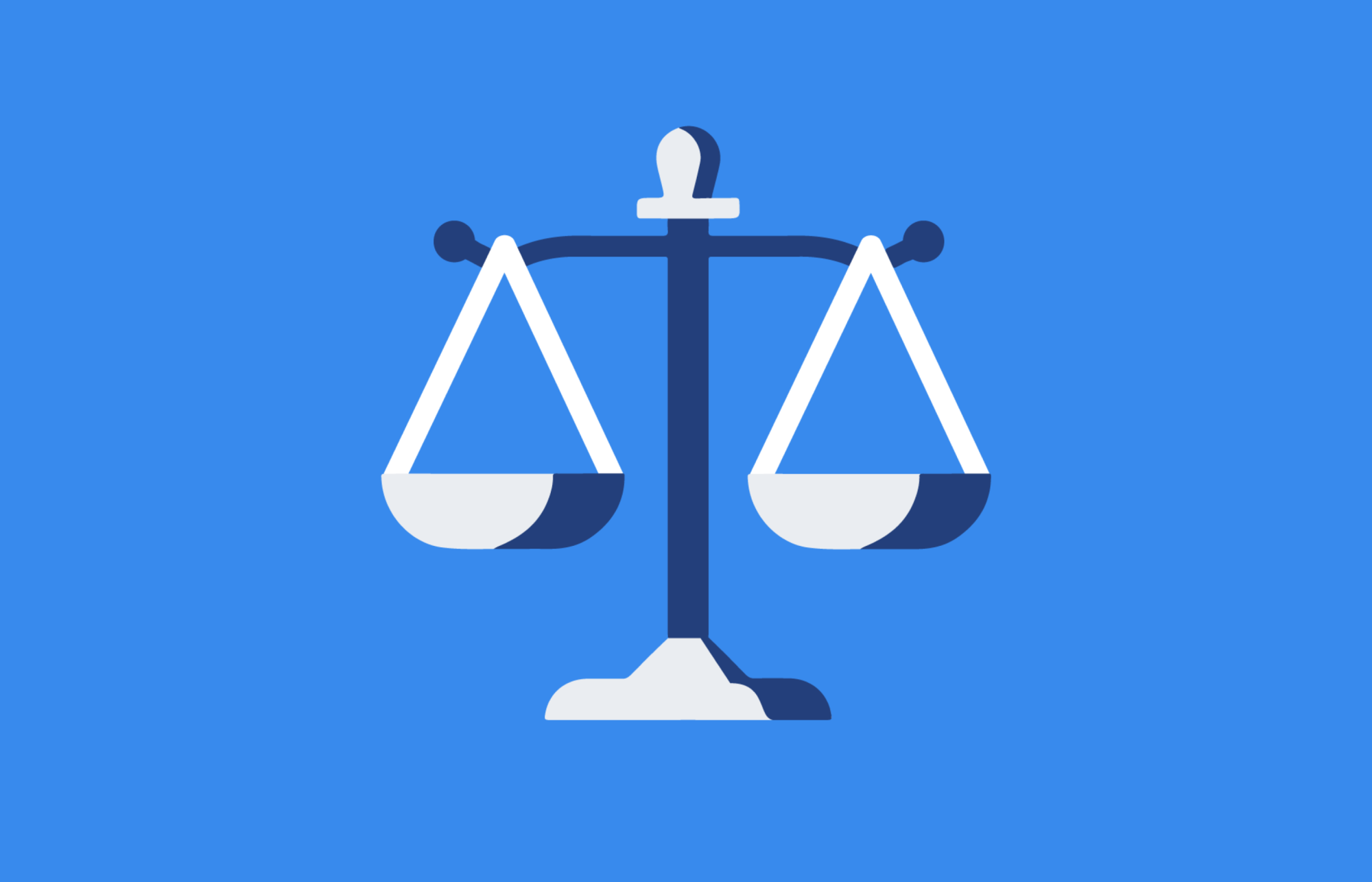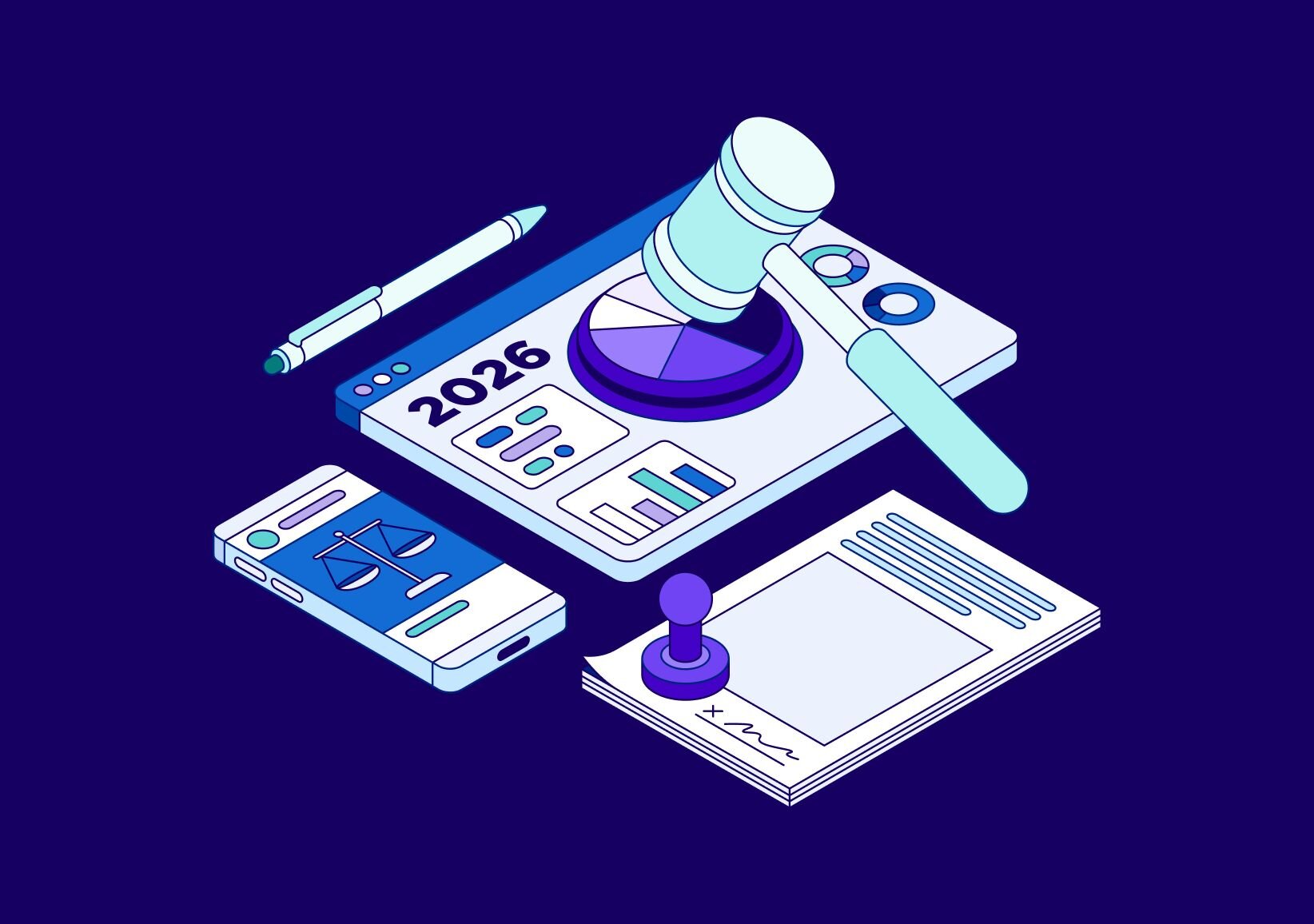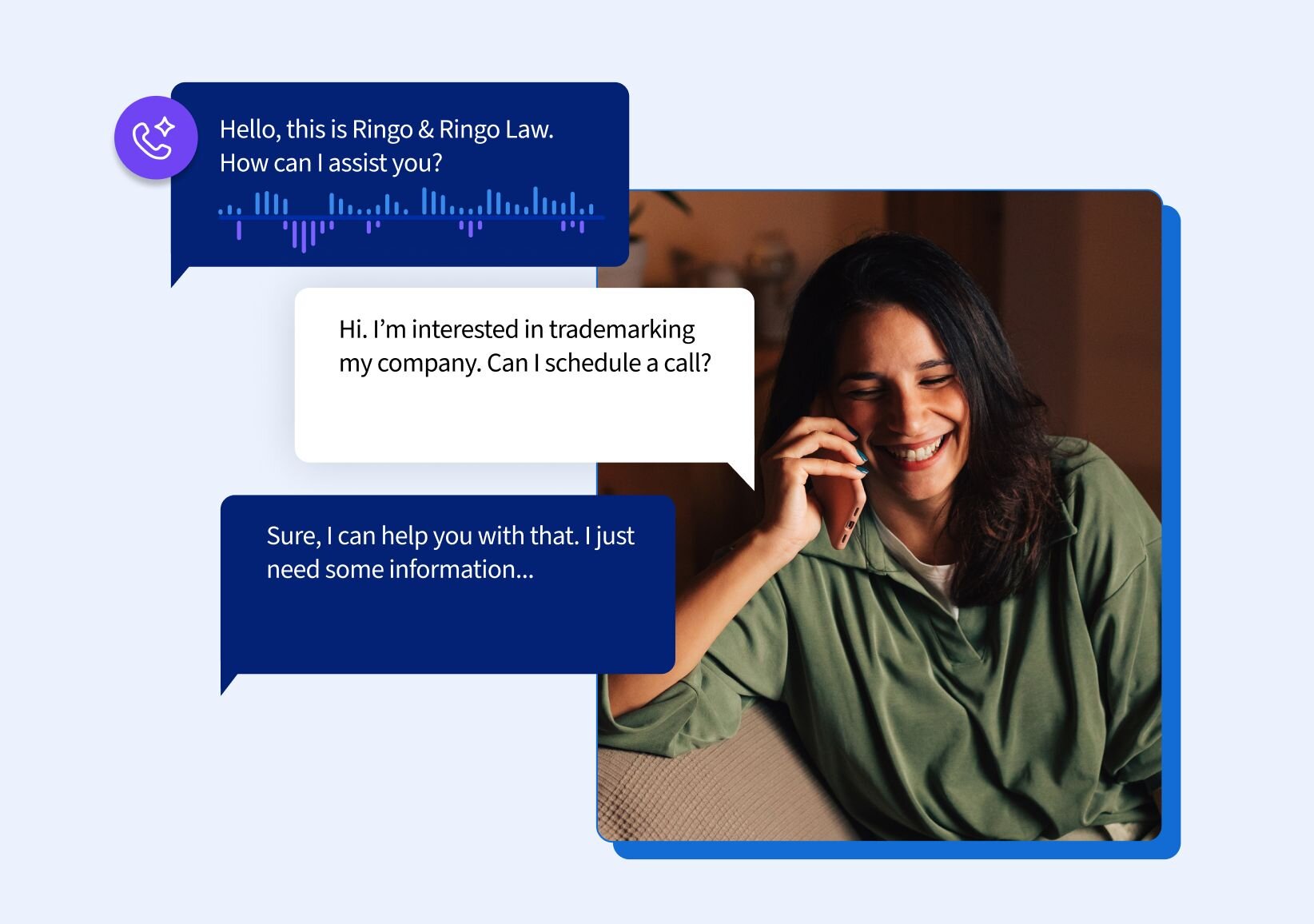As you look to grow your law firm, marketing tactics like word-of-mouth, traditional advertising, and organic search are important, but can only bring so much growth. Adding paid social media via Facebook to your marketing mix can supercharge your firm’s marketing efforts by helping you discover new audiences and reconnect with interested leads — ultimately, bringing more revenue into your practice.
With Facebook Ads (and this handy Guide to Lawyer Marketing, your law firm can make strategic investments to create greater awareness in your practice and convert prospects into consultations (and paying clients).
Here’s everything you need to know to get started.
Do Facebook Ads really work for lawyers?
When it comes to social media advertising, Facebook’s reach is unmatched with over 2.9 billion active users. With its rich demographic and behavioral insights, Facebook Ads make it possible to connect any business—even law firms—with the right audience.
For growing law firms that might not also be well-practiced marketers, Facebook Ads allow you to stretch a small marketing budget further with powerful yet affordable targeting. Reaching 1,000 people on Facebook can be as low as $3. Traditional channels like radio ($10 per 1,000), broadcast TV ($28 per 1,000) and direct mail ($57 per 1,000) are more expensive and less targeted.
Ready to get more leads at a lower cost-per-conversion? Let’s dive into the strategies your law firm can use to build campaigns, increase your conversions, and prove the value of your Facebook Ads.
Strategy 1: Understand your marketing funnel and create ads specifically for each stage
Before creating your first ad, you need to define your marketing funnel and the goals you have for each stage.
First and foremost: what do you want to achieve from your paid Facebook advertising? Are you trying to generate awareness for your law firm? Increase revenue by bringing on new clients? Generate more billings per case? Get business in a new location? Stay connected with past leads and clients?
Once you know your objectives you can start to build goals and tactics to help you achieve them.
Map your funnel stages
If you’re advertising your law firm on Facebook, you’re probably trying to achieve a mix of these objectives throughout the year. Each stage in your marketing funnel serves a different purpose and requires different messages and calls-to-action (CTAs).
Awareness
Also known as the top of the funnel, awareness is the stage with the widest audience and the broadest messages. The goal here is to get your brand in front of as many eyes as possible (which Facebook is great for).
Consideration
Once people know about your law firm, you can start to make your case. In the middle of the funnel, or the consideration stage, you’ll find you’re talking to a smaller audience, but that these people are more likely to talk to you. Present your evidence. Use content to educate and inform people while establishing you as a trusted expert.
Conversion
Once you’ve made people aware of your firm and educated them, you want to make your closing argument, pushing them to convert at the bottom of the funnel. Whether that means calling or filling out a form, this is where you turn prospects into leads.
It’s important to market for each stage of the marketing funnel. Prospect journeys are rarely linear, and you never know what level of awareness or research they’ve already done before interacting with your ads.
Set clear campaign goals
Ultimately, you want your advertising to turn into clients and billables. Set top-level goals and work backward.
Turn your goals into metrics by answering the following questions:
- How much revenue do you need to generate in a given time period?
- To make that revenue goal, how many new clients do you need?
- How many consultations will you need to have to make that client goal?
- How many leads does it take before you reach your consultation goal?
- How many impressions on your ads will it take to deliver that lead goal?
Only a small percentage of people will move through each stage of the funnel.
Each stage has a percent conversion rate to the next. For example, if 1% of your ad impressions convert to leads, you can budget for the number of impressions you need to hit your lead goal.
If you’ve never run a top-to-bottom Facebook marketing campaign before, you won’t have data to inform your conversion rates. Use industry-standard conversion rates alongside best practices and trial and error, then measure and refine as you go.
Strategy 2: Create retargeting ads for visitors of your website
A great strategy when starting out is to market to warm leads such as prospects who have recently called your firm. These leads are much more likely to convert quickly into billable clients.
With retargeting (using dynamic ads to improve targeted messaging) and remarketing campaigns (marketing to known leads), you can reconnect with prospects or clients you already know, personalize your ads based on engagement insights, and build loyalty by keeping your brand top-of-mind.
Facebook’s retargeting campaigns use dynamic ads that “automatically show each viewer the most relevant products and ad creative [...] based on the actions they’ve taken on your site or app.” Depending on the content they’ve downloaded or the pages they’ve viewed, you can create ads tailored to that experience that will draw them back in.
How can I create Facebook retargeting ads for my law firm?
To start a retargeting campaign, you need to create your audience using either a list of leads or through the Facebook Pixel, a small snippet of code that tracks behavior when people engage with your ads or content on your site.
Here are the basic steps that make retargeting and remarketing possible:
- Put together a correctly-formatted list of leads and upload to Facebook.
- Install the Facebook Pixel on your site so you can retarget based on web page views.
- Create a Custom Audience from either of these sources for your campaign.
- Create dynamic ads that are relevant to your different audiences.
- Reach out with sponsored messages to kickstart a conversation.
- Measure your ad performance.
If you have CallRail, you can easily create Custom Audiences inside of Facebook using Call Intelligence to generate urgent calls-to-action that get leads to call or message again.
Strategy 3: Create multiple versions of ads and split test them
Good lawyers don’t rely on a single defense in their appeals to a diverse jury, and your ads shouldn’t rely on a single message or design.
A/B testing, or split testing, lets you see what works and refine the various elements of your ad, such as headlines and headers, CTA, copy, creative, or messaging, to increase conversation rates. Whether you’re A/B testing a landing page or a Facebook ad, a small percent increase in your ad conversions can ultimately make or break your revenue goals.
Some ad elements to consider testing include:
- The audiences that receive your ads
- The placement of the ads across Meta-owned properties (i.e., in the Facebook News Feed, Instagram, etc.)
- The look and feel of your imagery
- Different product sets
- Multi-variable tests
- Delivery optimization for certain goals like brand awareness or engagement
When starting out, focus on one A/B testing element at a time to make sure you don’t muddy the results. Create an ad with the same imagery, but different calls-to-action. Or create ads with the same message but different imagery. If there’s a meaningful difference between their performance, the better performing ad is the winner.
Create compelling offers and gated content
Ultimately, people need a reason to convert. That’s why you need compelling offers—free consultations, free workshops, etc.—and valuable gated content that gets people to fill out a form. If people want what you’re offering, they’re more likely to click on your ad.
While A/B testing has an element of trial-and-error, you don’t have to pull messaging or offers from the void. With Conversation Intelligence from CallRail, you can use Artificial Intelligence (AI) to analyze the calls you’re having to discover what your leads and clients are interested in that will inform your gated content, ad offers, and ad creative. These real-world insights ensure you’re staying close to what your clients and leads want.
Strategy 4: Target a hyper-specific audience to keep ad relevance high
One of the biggest benefits of marketing on Facebook is that its Custom Audiences allow you to create as broad or as niche an audience as you wish. Take advantage of the platform with hyper-specific audiences that are more likely to deliver motivated leads.
Here’s how law firms might use Custom Audiences to achieve different goals throughout the marketing funnel.
- A family law firm might create a Custom Audience to promote brand awareness among couples who are trying to adopt.
- An estate planning lawyer might create a Custom Audience based on a certain age group to market an eBook guide about wills and trusts.
- A personal injury attorney may create a Custom Audience based on geographic region and occupation with a direct call-to-action inviting people to call for a free consultation around workplace injuries, such as construction site accidents.
Once you have dialed in great messaging for Custom Audiences, you can create “Lookalike” audiences. Lookalike audiences take the demographic data behind your known Custom Audience and create a list of similar, but new, people to market to in your area.
Expand your reach with broad or geographic targeting ads
It can be tempting to micromanage audiences to try to score quick conversions. But you don’t want to rely solely on niche, targeted ads because there are likely prospects who don’t fit your ideal audience profile that you’ll miss out on.
Use broad targeting to discover new customers and help hit your top-of-funnel, brand awareness goals. Broad demographic and geographic ranges will spread your brand message far and wide.
Strategy 5: Track The Success of Your Facebook Campaigns
If you’re focused on growing your law firm, use reporting tools to measure your Facebook Ads’ successes and failures. It’s vital that you are able to access the needed data in order to gain an understanding about what is working and what isn’t. According to Clio’s 2021 Legal Trends Report, growing firms are twice as likely to be using reporting tools as shrinking firms.
You should measure the performance of your Facebook Ads against your goals regularly—whether that’s weekly, monthly, or quarterly—at an interval that you can realistically sustain. Ask questions like:
- What percent of your revenue was sourced from Facebook Ads?
- What were your best- and worst-performing ads?
- What are your conversion rates throughout the funnel?
By answering these and other questions with data from your Facebook Ads, you can iterate on and improve your ads.
In addition to streamlining your marketing efforts, consider adopting case management software. Tools like these help you manage client information, track leads, and monitor case progress, ensuring that your firm's operations remain efficient even as your client base grows.
**Use Facebook Ads insights to have better conversations with leads **
Do more with your Facebook Ads insights when you consider them alongside call tracking analytics. With CallRail’s Call Tracking feature, you can see which Facebook Ads got attention and use that information to deliver a more meaningful phone conversation. Plus, you can track which ads lead to high-value call conversions.
With these insights, you can go back and boost ad spend on the ads that are driving the most high-quality phone calls, use those leads to create retargeting ad campaigns, or build lookalike audiences to appeal to a new audience with a winning message. Watch this on-demand webinar on using call analytics to improve Facebook Ads now.
Maximize Facebook Ads spend with CallRail
Facebook marketing is a powerful channel for law firms to tap into, whether they’re new to marketing overall or are well-versed in Search Engine Optimization (SEO) and content marketing. Lawyers that are committed to growing their firm through paid social media marketing with Facebook Ads are willing to:
- Map out the ideal customer and marketing funnel
- Take the time to create meaningful audiences based on your current customers and leads
- Spend time testing, iterating, and re-testing messaging, creative, and other ad elements
- Measure everything, improve what’s not working, and put more time and money into what is working.
CallRail’s integration with Facebook Ads Manager can help your firm increase the value of your Facebook Ads spend and drive high-value leads along with insights that result in more meaningful phone conversations.
We’re trusted by over 200,000 companies, including many law firms, to make the most of every call and every marketing dollar. See how CallRail helps attorneys grow their firm by starting a 14-day free trial today.










